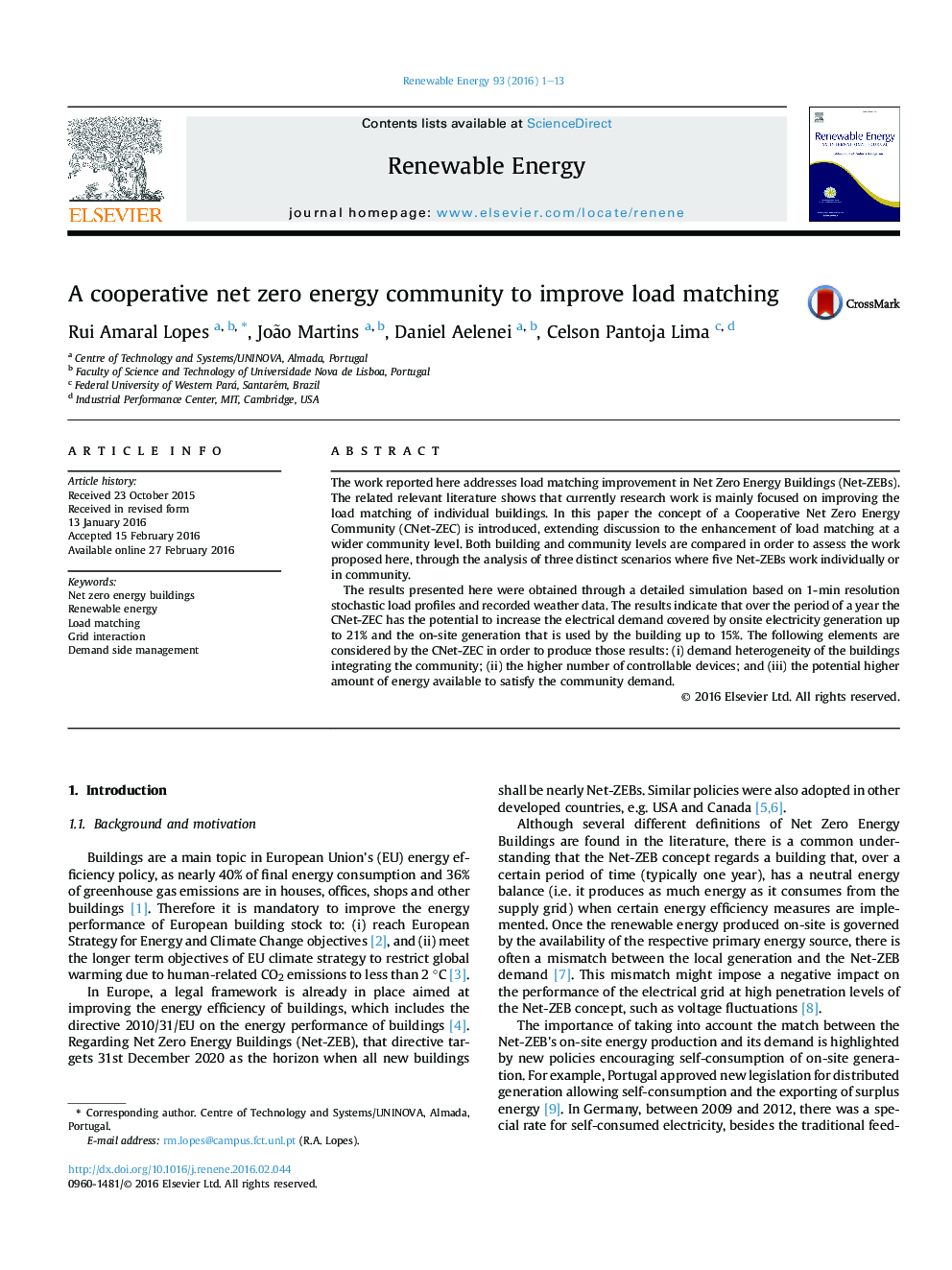| Article ID | Journal | Published Year | Pages | File Type |
|---|---|---|---|---|
| 299744 | Renewable Energy | 2016 | 13 Pages |
•Research on load matching improvement of net zero energy buildings.•The concept of cooperative net zero energy community is proposed.•A demand side management method based on a genetic algorithm is developed.•Significant improvements introduced by the cooperative net zero energy community.
The work reported here addresses load matching improvement in Net Zero Energy Buildings (Net-ZEBs). The related relevant literature shows that currently research work is mainly focused on improving the load matching of individual buildings. In this paper the concept of a Cooperative Net Zero Energy Community (CNet-ZEC) is introduced, extending discussion to the enhancement of load matching at a wider community level. Both building and community levels are compared in order to assess the work proposed here, through the analysis of three distinct scenarios where five Net-ZEBs work individually or in community.The results presented here were obtained through a detailed simulation based on 1-min resolution stochastic load profiles and recorded weather data. The results indicate that over the period of a year the CNet-ZEC has the potential to increase the electrical demand covered by onsite electricity generation up to 21% and the on-site generation that is used by the building up to 15%. The following elements are considered by the CNet-ZEC in order to produce those results: (i) demand heterogeneity of the buildings integrating the community; (ii) the higher number of controllable devices; and (iii) the potential higher amount of energy available to satisfy the community demand.
